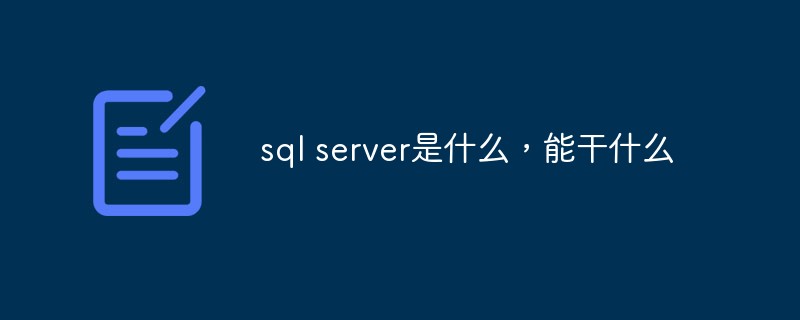SQL Server is a relational database management system launched by Microsoft for storing and retrieving data; it can perform queries on the database, store and retrieve data, and update data in the database. It can be retrieved from the database through SQL statements. Database writing or retrieving data, etc.

SQL Server is a relational database management system, mainly used to store data. Next, in this article, we will introduce you to the SQL Server database in detail. Knowledge has certain reference value and I hope it will be helpful to everyone.
[Recommended courses: SQL tutorial]
SQL Server database introduction
SQL Server is A relational database management system developed by Microsoft. It is easy to use, has good scalability, and has a high degree of integration with other related software. And it can be used across a variety of platforms, from small computers running Microsoft Windows 98 to large multi-processor servers running Microsoft Windows 2012.
Characteristics of SQL Server database
(1) Trustworthiness
The database has high security and Reliability, so SQL Server is used in many key projects to run mission-critical programs
(2) Efficiency
This database can reduce development costs Cost and time to manage data infrastructure
(3) Intelligence
The database provides a comprehensive platform that can send observations to users when they need them and information.
The role of SQL Server database
(1) Can execute queries against the database
(2) Store and retrieve data
(3) You can write or retrieve data from the database through SQL statements
(4) You can update the data in the database
Summary: The above is the entire content of this article, I hope It will be helpful for everyone to learn
The above is the detailed content of What is sql server and what it can do. For more information, please follow other related articles on the PHP Chinese website!